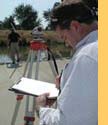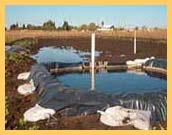
 Site
selection follows a methodical approach that considers many factors,
including the candidate property’s ability to percolate water
to the aquifer. Through a four-phased process, the Program assures
cost-effective and cost-efficient development of candidate sites,
while preserving the rights of the landowner and Program sponsors.
Site selection phases include: Site
selection follows a methodical approach that considers many factors,
including the candidate property’s ability to percolate water
to the aquifer. Through a four-phased process, the Program assures
cost-effective and cost-efficient development of candidate sites,
while preserving the rights of the landowner and Program sponsors.
Site selection phases include:
Phase
One: Site Screening
- Determine
landowner interest
- Analysis
of potential benefits
- Analysis
of site location for environmental review and water supply
- Analysis
of parcel size and availability
Phase
Two: Field Investigation

- Borehole
drilling to sample and analyze soil composition
- Analysis
of groundwater and supply water quality
- Prepare
Environmental Assessment, within framework of the National Environmental
Policy Act and the California Environmental Quality Act
Phase
Three: Site Testing

- Sign
land agreement with landowner
- Site
preparation for demonstration testing, including:
- Construct field
flooding cell and water conveyance
- Construct surface
water monitoring system
- Construct groundwater
monitoring well system to measure groundwater elevation
and water quality
- Fied flooding initation and operation
Phase
Four: Long-term Operations
- Long-term
land agreements
- Final
design, construction and operation
- Site
management and monitoring

|


